20th June 2025
LIFE A-MAR, communicating the Natura2000 network: tools and perception of marine sites
The online meeting addressed the issue of environmental communication linked to the marine sites of the Natura 2000 Network, with the aim of understanding which tools are used by institutions, which are the most effective strategies and how citizens perceive these messages and the values of biodiversity.

The webinar was held on 19 June in the framework of the LIFE A-MAR NATURA2000 project, of which Federparchi is the lead partner, and is part of action B.3 dedicated to training and capacity building for NATURA2000 marine site management bodies and stakeholders with training activities for the staff of marine site management bodies aimed at increasing the individual capacity of local managers or operators and, collectively, of the managing body.
NEWS
LIFE A_MAR, COMMUNICATING THE NATURA2000 NETWORK TOOLS AND PERCEPTION OF MARINE SITES
The online meeting addressed the issue of environmental communication linked to the marine sites of the Natura 2000 Network, with the aim of understanding which tools are used by institutions, which are the most effective strategies and how citizens perceive these messages and the values of biodiversity.
The webinar was held on 19 June in the framework of the LIFE A-MAR NATURA2000 project, of which Federparchi is the lead partner, and is part of action B.3 dedicated to training and capacity building for NATURA2000 marine site management bodies and stakeholders with training activities for the staff of marine site management bodies aimed at increasing the individual capacity of local managers or operators and, collectively, of the managing body. The training activities concern both technical staff of NATURA2000 site managers and local operators (educators, environmental guides, escorts).
The meeting was coordinated by Rocky Malatesta, president of AMP Torre Guaceto, vice president of Federparchi and coordinator of Marine Protected Areas Committee. After a brief presentation of the project, Malatesta focused on the centrality of communication, because ReteNatura2000 is fundamental as an environmental value but still little known. “We want to deepen how it is communicated, and which tools can be used. The questionnaires carried out within the project revealed a willingness of stakeholders to participate, in fact 58% answered that they know about the themes of marine sites, as well as the critical issues they experienced.” Malatesta went on to emphasise the need for Marine Protected Areas to equip themselves with adequate skills for communication activities and recalled the States General of Protected Areas for the revision of Law 394 held in Rome on December 2024 because ‘it is important to carry on a revision of the law on parks’.
Antonio Maturani, Head of Division III – Protection and Restoration of Biodiversity and Ecosystems, TBM Directorate, Ministry of the Environment and Energy Security (MASE), introduced the discussion by pointing out how environmental values are important at a time when climate crisis and biodiversity loss pose unprecedented challenges. “Awareness of the importance of these areas must be raised – he said – The Natura2000 Network is the main European instrument for the protection of biodiversity. In Italy it covers 19.4 % of the land area and 6.4 % of the sea area. For the Ministry’s activities, our reference is the European Biodiversity Strategy to 2030.” Maturani then extensively illustrated how the MASE plays a role of guidance, coordination and technical support towards managing bodies of protected areas and how it is necessary to strengthen communication activities on nature conservation by also continuing to share such activities with local communities and civil society.
Maddalena Visser – European Commission – DG Environment, Directorate D Biodiversity, Unit D.3 – Nature Conservation, outlined the EU Commission’s Communication Strategy for RN2000. She recalled the Nature Day on 21 May and focused on communication and citizen participation tools, among them the “bioblitzes”. Visser also emphasised the need to disseminate the RN2000 logo, which conveys a message of combining conservation and sustainable development. She then illustrated the Award for Excellence of the RN2000, which includes five categories, and the six-monthly Newsletter that offers updates on the state of the Network and the main initiatives of the European institutions. Finally, she showed the RN2000 “Online Viewer”, which allows the exploration of marine sites through a geolocalised map with all reference data.
Laura Petitti, Division III, Protection and Restoration of Biodiversity and Ecosystems, TBM Directorate, MASE, spoke about the importance of the Habitats European Directive, which introduced innovative elements that are still valid today, including the concept of the network, identifying conservation sites based on the peculiarities of the species to be protected. “An approach that takes into account compatibility with human activities. “More than 30 years after such Directive – she continued – there are still problems with the perception of RN2000, although we are not at the levels of 2013 when only 12% of citizens were aware of Natura2000.” Visser then illustrated the MASE’s tools for communicating RN2000 in Italy: the web page on the Ministry’s website, the NNB National Biodiversity Network website and the Habitats Directive Reporting website (ISPRA), with a technical-scientific profile and the importance of Life projects, such as A-MAR, which carry out relevant communication activities.
Elisabetta Del Bufalo, first researcher of ISTAT – Italian National Institute of Statistics, Central Directorate for Demographic Statistics and Population Census. Population Registry, Demographic Statistics and Living Conditions Service, spoke about the perception of environmental hazards and compatible behaviour in daily life, illustrating the relevant ISTAT data. The analysis of hazard perceptions shows how climate change is currently the main environmental concern of Italian citizens. Hydrogeological instability is perceived in conjunction with extreme events, while the theme of biodiversity loss is present in 23% of Italians, but among young people it rises to 26.7% in males and 34% in females. Del Bufalo also emphasised how attention and the adoption of eco-friendly behaviour is growing, even if in a lower percentage than the European average.
The conclusions fell to Luca Santini, president of Federparchi, who stressed the need for resources, which are not infinite, to be targeted and not dispersed. “The problem of RN2000 sites mainly concerns governance. Marine sites that are outside national parks or MPAs are almost abandoned, the mayors of the adjacent territories, who are given the responsibility, are unable to manage them as they are overcharged. One solution could be to transfer governance to the nearest MPAs or national parks.
In order to reach the European objectives of 30% of protected areas by 2030 on land and sea,’ Santini continued, ‘we need to centralise planning objectives on the national government. The national parks are superordinate bodies that answer directly to the MASE and can therefore carry out actions without having to make intermediate steps”. President of Federparchi, taking a cue from important experiences in the Apennines, then emphasised the need for accurate monitoring of conservation interventions in the protected areas in order to make good use of resources, as there is an urgent need to allocate funds for the protection of the sea.
Federparchi is the lead partner in the LIFE A-MAR NATURA2000 project, with Triton Research, LIPU and Fundación Biodiversidad, a public foundation of the Spanish Ministry for Ecological Transition and Demographic Challenge as partners. The Cinque Terre, Arcipelago Toscano and Asinara National Parks are participating as project co-funders.






